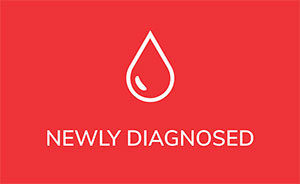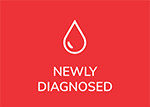The Risk Of Secondary Cancer Associated With > 8 CT Scans In Patients With NHL (Non Hodgkins Lymphoma)
Take Away Points:
- Although CLL is a form of NHL, this study is in a different demographic with a different disease and different treatment.
- More than 8 CT Scan was associated with an increased cancer risk.
- Each additional CT scan increased risk for secondary primary malignancy by an estimated 3%.
- The increase was noted within two years.
- Cancer risk in organs was increased where the radiation exposure was higher due to the overlapping done when multiple studies (i.e. chest and abdomen) are performed.
Preface:
I am examining recent research in the long running debate concerning the risks of CT (Computed Tomography) and PET (Positron Emission Tomography) scanning, with focus on how it may relate to our CLL / SLL community.
My opinion, reflecting that of many CLL specialists and credentialed medical researchers, is that the public is being subjected to far too many unnecessary CT scans thus prompting me to write a series of 15 essays. My concern for the CLL / SLL community as a potentially more vulnerable population to the risks from CT ionizing radiation rests largely in the fact that we are often subjected to frequent CT scans and being an immune compromised group, it suggests we are also poorer at repairing double stranded DNA breaks from CT ionizing radiation. Further more, there has not been a study on a CLL / SLL population to confirm or refute the risk contention.
The study I am about to review comes as close as any study so far in shedding light on this issue but has some deficiencies as it relates to us.
Caveats:
Before you read about the actual findings from the study by Sheng-Hsuan Chien et al., it is advised to consider the following:
- We cannot directly compare the findings from this study to our CLL / SLL community as this study has a narrower goal to assess CT scanning risk for increased SPM (Secondary Primary Malignancies) in a group of aggressive NHL (Non Hodgkins Lymphoma) patients who have been given therapies with curative intent.
- While this study does relate more closely to CLL patients that have faced or are facing curative therapy attempts after developing RT or RS (Richter’s Transformation or Syndrome) it is quite different from the contexts of most frequent CT scan use in CLL / SLL periods of Wait & Watch or Clinical Trials where most patients are slowly progressing (W&W) or not achieving a CR (Complete Response in Clinical Trials).
- The justification for more frequent CT scanning in a Clinical Trial situation is based on a drug developer’s need to prove efficacy by documenting non-palpable internal lymph node response to a study drug and early detection of relapse often first seen in internal lymph node enlargement.
- Although the study was a nationwide effort involving a large number of patients (4,874), it involved a Taiwanese population with potentially different genetic and or environmental characteristics that could muddy the result when applied to a largely Western Caucasian populations more prone to CLL / SLL than Asian populations.
- Because the NHL study patients all received a very harsh Chemo based therapy (CHOP) it is possible that the therapy in combination with ionizing radiation from CTs had an important role in the findings as opposed to the many less toxic therapies used in CLL / SLL Clinical Trials where frequent CT scanning is mandated.
- The study has looked at CT scan effects primarily in the context of a presumed cure whereas CLL / SLL patients are scanned in W&W (Wait & Watch), again after therapy and most frequently in Clinical Trials where disease is still present.
Other short falls of the study from a CLL / SLL standpoint are:
- Given the study was done in Taiwan we are not given any information as to the dosing of ionizing radiation used per CT scan. The range can be significant and you can read about this in my CT scan essay series #5. We are not given the average or age range of participants. CT scans in the study might be administered in greater number over a shorter period of time than would be the case in a CLL / SLL patient experience.
- Number of scans in the study range from 5 to12.
- Study states: “It is conceivable that liver tumors are related to the highly prevalent Hepatitis B infection and its associated cirrhosis in Taiwan.”
While I agree with the apples versus oranges criticism of some in applying the study conclusions to our people, I feel there is still considerable value in bringing this study and its conclusions to the attention of the CLL / SLL community. I mentioned the caveats as I see them and have pointed out in my CT essays that there has not been a study in CLL / SLL to discover whether the condition of having CLL / SLL with its immune suppression and high frequency of CT exposure contributes to a secondary cancer risk or is overridden by greater benefits. The need to have imaging, from a research perspective, is greater with the newer KIs (Kinase Inhibitors) such as Ibrutinib, ACP-196, Idelalisib etc. but the risk probability of SPM from frequent CT scanning is also increasing as people who would otherwise have died, are now living longer. The study is the closest yet to defining a potential risk for increased SPM in our guys from frequent scanning.
Below is a link to abstract from the study and links two lay articles that review it.
Healio at HemOnc today offers a very short overview of the findings.
Medscape offers a deeper review of the data
Highlights Of The Research:
- Study results of 4,874 Patients selected for consistency of relevant factors found:
- “… patients receiving more than 8 CT scans had significantly higher risk than patients exposed to fewer scans, with secondary cancers most frequently arising in breast, stomach and liver.” Note: We are not talking about skin cancers here!
- “The risk of SPM [Secondary Primary Malignancies] increases 3-5% per additional CT scan.”
- Divergence between fewer & more SPMs began as early in the findings as between 2 & 4 years after the number of CT scans documented as between 5 and 12.
This finding could be the most revealing because of the relatively short time frame and because it is related directly to the number of CT scans. Many medical opinions place appearance for potential SPM at 10 to 20 years.
“Among the 180 SPM cases identified in this cohort, the most commonly observed subtypes were cancers originating from the liver and biliary tract (n=35)…”
An Interesting but not surprising finding: “… cancers of the stomach, breast and liver were significantly predominant in those patients receiving more CT scans, implying a high risk in the OVERLAPPED BODY SITES.” This is a reflection the double exposure that comes with the usual practice of overlapping the CT slices of adjacent body parts such as abdomen and chest when both are imaged.
Study Conclusion:
- Routine surveillance CTs are of limited value in detecting asymptomatic early relapse with NHL patients having received therapies with the intent for cure and does not contribute to better overall survival.
- This study addresses the purpose for frequent CT scans with the specific goal of catching asymptomatic early relapse and should not be confused with the goals of Clinical Trial frequent scanning having the intent to document experimental drug efficacy, other impacts and disease progression in CLL / SLL patients still harboring degrees of tumor.
- The single most interesting finding was the detection of a trend for increased SPM beginning as early as 2 years in the patients having received 8 to 12 CT scans as opposed to those patients having received less than 8 CT scans. This study begs the need for a CLL / SLL patient study with age, gender, CT frequency, total number and dosing parameters examined.
- This study demonstrates an important reason to eliminate any overlapping of CT scans when patients in Clinical Trials are typically given double or triple scans in one session.
Wayne Wells AKA WWW 3/14/15 with some minor editing by Brian Koffman

















